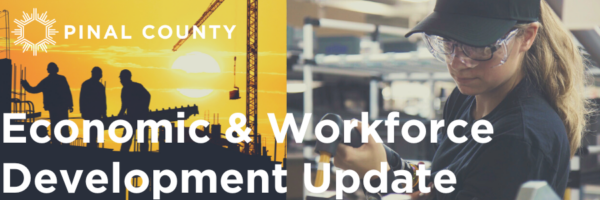
FOR IMMEDIATE RELEASE
May 11, 2020
The Monday Morning Quarterback
A quick analysis of important economic data released over the last week
The data from last week shows just how quick and deep the damage from closing the economy has been. Initial claims for unemployment insurance, while increasing at a slower rate over the past several weeks, was still up over 1,300% from a year ago. The unemployment situation was unprecedented, with more than 20 million jobs lost over the past month. All major sectors were down. The unemployment rate, while up more than 10 percentage points over last month (up to 14.7% from 4.4%) was a lot better than it should have been due to technical considerations. The non-manufacturing sector had its first contraction in 122 months. And none of this was due to typical cyclical conditions.
The severity of the forced closure of the economy and the very measured reopening suggests that it will take quite a while to get back to where we otherwise would have been. There are still far too many unknowns to determine with any certainty how long it will take. First and foremost, an end can’t fully materialize until there is a vaccine or at least treatments that would mitigate the severity and risk of getting COVID-19. This is especially true for those who are over 65 and/or have preexisting medical conditions that tax the immune system (if you are under 55, your chances of dying from the virus appear to be very low).
We do know that there are perverse incentives to reemployment in most areas of the U.S. caused by unemployment benefits being higher than the wages of those who were laid off. We think that there will be many businesses, perhaps 20%-30%, that will not be able to reopen. We know there will be severe supply chain issues. We will see how many Americans were able to accumulate cash because they remained employed during the shutdown. We will also see if those who were furloughed or laid off were able to do the same thanks to the CARES Act. And we will see how many fell through the cracks in the system and will end up in real financial trouble. We will see if the spending and saving habits of Americans have changed. And we will see how long it will take to adjust to operating in a world of social distancing and underutilized capacity at restaurants, retail stores, etc. Again, suffice it to say that until COVID-19 is mitigated, there is little chance of getting all the way back.
Yet, that doesn’t mean we can’t make progress. It will be slow at first. In fact, the worst for unemployment is probably still ahead of us. But, as things open up, the recovery will gain speed. How fast is problematic. We do know that people are itching to get out again. We know that the housing market anecdotally has been doing better than expected. We know that almost 80% of those laid-off believe they have just been furloughed and not fired. This suggests that most believe they will be recalled at some point. Historically, the higher the percent that believed they were simply furloughed, the more rapid the recovery has been. We can also surmise that there is significant pent up demand and lots of money accumulated for that demand.
There are risks. There always are. The recovery will not be without bumps along the way. Given the statistics, getting the economy moving again appears to be the best alternative.
In the meantime, help others where you can. Wear a mask. Socially distance. And don’t go out if you’re not feeling well.
Recent data gives us a look at employment activity, non-manufacturing activity and consumer credit. The other data was still B.C. and doesn’t matter. In Arizona, we got a look at unemployment benefits and housing sales data.
U.S. Snapshot:
- Employment contracted by an unprecedented 20.5 million jobs in April. Losses were across the board (see chart below). The only good news was that the losses were lower than expected. The unemployment rate rose to 14.7% from 4.4% in March and 3.6% a year ago. The unemployment rate was actually much lower than it could have been because the labor force contracted by 6.4 million as many laid-off people simply left the labor force. Further, measurement issues for both the household and payroll surveys blurred the true situation.
- The culprit was not the normal activity of the economic cycle but the effect of the COVID-19 virus and the resultant forced closure of nonessential businesses. Additionally, the figures from the April report underestimate the total impact on the labor market as millions more workers have filed for unemployment benefits since the mid-month survey week.
- The employment-to-population ratio, probably the best measure of the hit to the labor market, lost 10-percentage points. That translates into 25.3 million people. There is more detail that I won’t go into here. None of it is good news.
- Initial claims for unemployment insurance rose by 3.169 million for the week of May 2nd. While that’s down from the 6.867 million the week of March 28th, it’s still up over 1,300% from year earlier levels. Since mid-March, more than 33.5 million workers have applied for unemployment insurance. That’s an average of just about 4.8 million a week. A year ago, it was running just over 200,000 a week.
- The ISM’s non-manufacturing index fell to 41.8. This is 10.7 percentage points lower than March’s figure of 52.5 and is the lowest reading since March 2009. Any reading of less than 50 indicates a recession in the non-manufacturing sector. This reading ends 122 consecutive months of growth.
- Revolving credit (mostly credit card debt) contracted by $12.1 billion in March. This is a whopping 30.9% decline at an annual rate. It reflects a combination of an inability to get out and spend and a more restrictive lending pattern on the part of banks and finance companies.
Arizona Snapshot:
- Initial claims for unemployment insurance in the state increased by 43,023 for the week of May 2nd. This continues the declining rate of initial claims over the past weeks but is still 828% above year earlier levels. Since mid-March, 517,308 Arizonan’s have filed an initial claim. That represents 17.3% of the jobs in the state as of mid-March.
- The April data for housing sales was mixed. Existing sales were down 27.4% from a year ago while new built sale volumes were actually up 1.4%. Keep in mind that many of the April sales were put into escrow before the Coronavirus caused the closure of a significant part of the economy. Next month’s data should give a more accurate picture of what is going on. New single family permit data should be out this week. It will also tell an important story.

About EDPCo
Elliott D. Pollack & Company (EDPCo) offers a broad range of economic and real estate consulting services backed by one of the most comprehensive databases found in the nation. This information makes it possible for the firm to conduct economic forecasting, develop economic impact studies and prepare demographic analyses and forecasts. Econometric modeling and economic development analysis and planning are also part of our capabilities. EDPCo staff includes professionals with backgrounds in economics, urban planning, financial analysis, real estate development and government. These professionals serve a broad client base of both public and private sector entities that range from school districts and utility companies to law firms and real estate developers.
For more information, contact –
Elliott D. Pollack & Company
5111 N. Scottsdale Rd, Suite 202,
Scottsdale, AZ 85250
480-423-9200 Website | Twitter | Facebook











